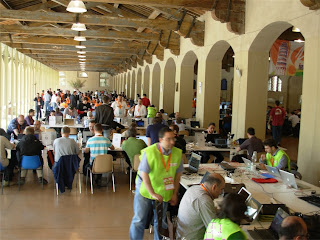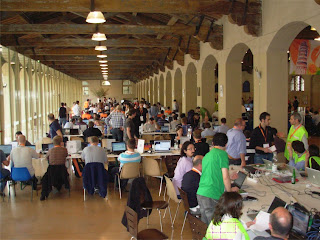+
XXX
XXXXX
XXXXXXX
XXXXXXXXX
"BUON ANNO"
"JOYEUX NOEL"
"VESELE VANOCE"
"MELE KALIKIMAKA"
"NODLAG SONA DHUIT"
"BLWYDDYN NEWYDD DDA"
"GOD JUL"
"FELIZ NATAL"
"BOAS FESTAS"
"FELIZ NAVIDAD"
"MERRY CHRISTMAS"
"ΚΑΛΑ ΧΡΙΣΤΟΥΓΕΝΝΑ"
"KALA CHRISTOUGENA"
"VROLIJK KERSTFEEST"
"FROHLICHE WEIHNACHTEN"
"BUON NATALE-GODT NYTAR"
"HUAN YING SHENG TAN CHIEH"
"WESOLYCH SWIAT-SRETAN BOZIC"
"MOADIM LESIMHA-LINKSMU KALEDU"
"HAUSKAA JOULUA-AID SAID MOUBARK"
"'N PRETTIG KERSTMIS"
"ONNZLLISTA UUTTA VUOTTA"
"Z ROZHDESTYOM KHRYSTOVYM"
"NADOLIG LLAWEN-GOTT NYTTSAR"
"FELIC NADAL-GOJAN KRISTNASKON"
"S NOVYM GODOM-FELIZ ANO NUEVO"
"GLEDILEG JOL-NOELINIZ KUTLU OLSUM"
"EEN GELUKKIG NIEUWJAAR-SRETAN BOSIC"
"KRIHSTLINDJA GEZUAR-KALA CHRISTOUGENA"
"SELAMAT HARI NATAL - LAHNINGU NAJU METU"
"SARBATORI FERICITE-BUON ANNO"
"ZORIONEKO GABON-HRISTOS SE RODI"
"BOLDOG KARACSONNY-VESELE VIANOCE "
"MERRY CHRISTMAS - - HAPPY NEW YEAR"
"ROOMSAID JOULU PUHI -KUNG HO SHENG TEN"
"FELICES PASUAS-EIN GLUCKICHES NEWJAHR"
"PRIECIGUS ZIEMAN SVETKUS SARBATORI VESLLE"
"BONNE ANNEBLWYDDYN NEWYDD DDADRFELIZ NATAL"
XXXXX
XXXXX
XXXXX
XXX
XXXXX
XXXXXXX
XXXXXXXXX
"BUON ANNO"
"JOYEUX NOEL"
"VESELE VANOCE"
"MELE KALIKIMAKA"
"NODLAG SONA DHUIT"
"BLWYDDYN NEWYDD DDA"
"GOD JUL"
"FELIZ NATAL"
"BOAS FESTAS"
"FELIZ NAVIDAD"
"MERRY CHRISTMAS"
"ΚΑΛΑ ΧΡΙΣΤΟΥΓΕΝΝΑ"
"KALA CHRISTOUGENA"
"VROLIJK KERSTFEEST"
"FROHLICHE WEIHNACHTEN"
"BUON NATALE-GODT NYTAR"
"HUAN YING SHENG TAN CHIEH"
"WESOLYCH SWIAT-SRETAN BOZIC"
"MOADIM LESIMHA-LINKSMU KALEDU"
"HAUSKAA JOULUA-AID SAID MOUBARK"
"'N PRETTIG KERSTMIS"
"ONNZLLISTA UUTTA VUOTTA"
"Z ROZHDESTYOM KHRYSTOVYM"
"NADOLIG LLAWEN-GOTT NYTTSAR"
"FELIC NADAL-GOJAN KRISTNASKON"
"S NOVYM GODOM-FELIZ ANO NUEVO"
"GLEDILEG JOL-NOELINIZ KUTLU OLSUM"
"EEN GELUKKIG NIEUWJAAR-SRETAN BOSIC"
"KRIHSTLINDJA GEZUAR-KALA CHRISTOUGENA"
"SELAMAT HARI NATAL - LAHNINGU NAJU METU"
"SARBATORI FERICITE-BUON ANNO"
"ZORIONEKO GABON-HRISTOS SE RODI"
"BOLDOG KARACSONNY-VESELE VIANOCE "
"MERRY CHRISTMAS - - HAPPY NEW YEAR"
"ROOMSAID JOULU PUHI -KUNG HO SHENG TEN"
"FELICES PASUAS-EIN GLUCKICHES NEWJAHR"
"PRIECIGUS ZIEMAN SVETKUS SARBATORI VESLLE"
"BONNE ANNEBLWYDDYN NEWYDD DDADRFELIZ NATAL"
XXXXX
XXXXX
XXXXX


































